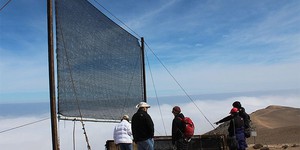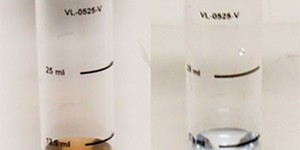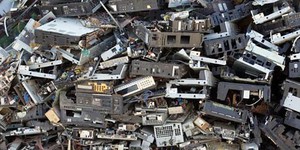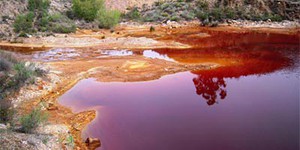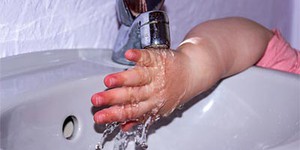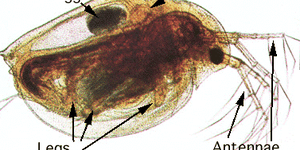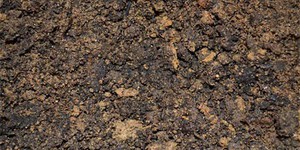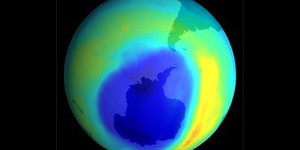Middle School, Environmental Science Science Projects (41 results)
As humans we are part of the environment. With over 7.5 billion of us on Earth, our combined actions also have a big impact on the environment. As long as we are aware of the impact, we can do things as individuals, and working together as groups, to lessen the detrimental impact of billions of people. Explore important topics like air quality, water quality, the effects of climate change, and many others to make informed decisions about caring for our planet.
|
Select a resource
Sort by
|
Did you know that about 1 in 10 people worldwide do not have access to clean water? Collectively, girls and women worldwide spend an average of 200 million hours every day collecting the water they need from rivers, water holes, or lakes. What if there was a way to capture water from another source—like the air? In areas where there is a lot of fog, a device called a fog catcher makes this possible. Fog catchers use fine meshes to capture and collect water droplets from the foggy air.…
Read more
Featured
Have you heard that garlic powder is supposed to inhibit the growth of bacteria? Which do you think would make a better disinfectant: a solution of garlic powder or a solution of bleach? This project shows you a straightforward way to compare the effectiveness of different disinfectants (or other antimicrobial agents), by measuring zones of inhibition on a culture plate.
Read more
Many people are surprised to learn that the season's we experience—winter, spring, summer and fall—have nothing to do with the distance of Earth from the Sun. In this science fair project, you will investigate how the temperature on Earth actually depends on the tilt of Earth's axis of rotation.
Read more
To survive, we need oxygen in the air we breathe. Oxygen is also essential for most aquatic organisms, but there is much less oxygen available in water than in air. How much oxygen can dissolve in water? Does the temperature of the water matter? Learn how to measure dissolved oxygen and then see how oxygen concentration changes with water temperature.
Read more
If you made a pile of all the electronic devices (cell phones, computers, stereos, televisions, MP3 players, video game systems, remote-control toys, etc.) that your family has gotten rid of since you were a baby, how big would that pile be? Would it be taller than you? Would it fit better in a wheelbarrow or in a pickup truck? And did they just throw it in the trash? In this science project, you'll explore what people in your community do with electronic waste, commonly called e-waste, and…
Read more
You might know that lead can be toxic, and that you can get lead poisoning from eating or inhaling old paint dust. Lead is called a heavy metal, and there are other sources of heavy metals that can be toxic, too. Silver, copper, mercury, nickel, cadmium, arsenic, and chromium are all heavy metals that can be toxic in certain environments. In this experiment, find out if one common heavy metal, copper, can be toxic to an aquatic environment.
Read more
How much water do you use? Conserving water can do more than save your parents' money, it can also save freshwater ecosystems, wetlands, and watersheds. Some companies are trying to help fix the problem by making low flow faucets and showerheads. How well do they work? How much water can you save? Go to the hardware store to buy a few of the water saving products. Compare the amount of water that you run over a period of time to determine how much water you can save. Which water saving…
Read more
One way to test for the presence of toxic compounds in a water sample is a bioassay. In a bioassay, a living organism serves as a detector for toxins—the same way canaries were used in coal mines to detect invisible toxic gases. In this project, water fleas (Daphnia magna), a freshwater crustacean, are used in a bioassay to monitor water quality. Many variations of this experiment are possible.
Read more
The element lead is a neurotoxin that is particularly dangerous to young children. Among other uses, lead compounds were common paint additives until being phased out for safer titanium-based additives beginning in the 1960's. Lead compounds were also added to gasoline to prevent engine knocking, until being phased out beginning in the 1970's. Although paint and gasoline sold today no longer contain lead, soil can have contamination from older sources of lead, such as paint from old…
Read more
Extinct might be a word you associate with animals that lived long ago, like the dinosaurs, but did you know that over 18,000 species are classified as "threatened" (susceptible to extinction) today? Scientists involved in wildlife conservation have a tough job; they are in charge of determining what needs to be done to prevent a species from becoming extinct. Habitat, food supply, and impacts of local human populations are just a few of the factors these scientists take into account. It is a…
Read more
The ozone layer is important for blocking most of the harmful radiation that comes from the sun. You can find maps of the ozone layer and compare different regions of the globe for ozone coverage. Where are the problem areas? Is there a difference in ozone coverage between different hemispheres? Between populated and un-populated areas? In atmospheric regions over land masses or over bodies of water? Some scientists think that aerosols in the air are breaking down the ozone layer. You can do…
Read more
|
Explore Our Science Videos
How to Build a Unicorn Art Bot
How Antibiotic Resistant Bacteria Take Over – STEM activity
What Do Enzymes in Pineapple Juice Do to Milk?


